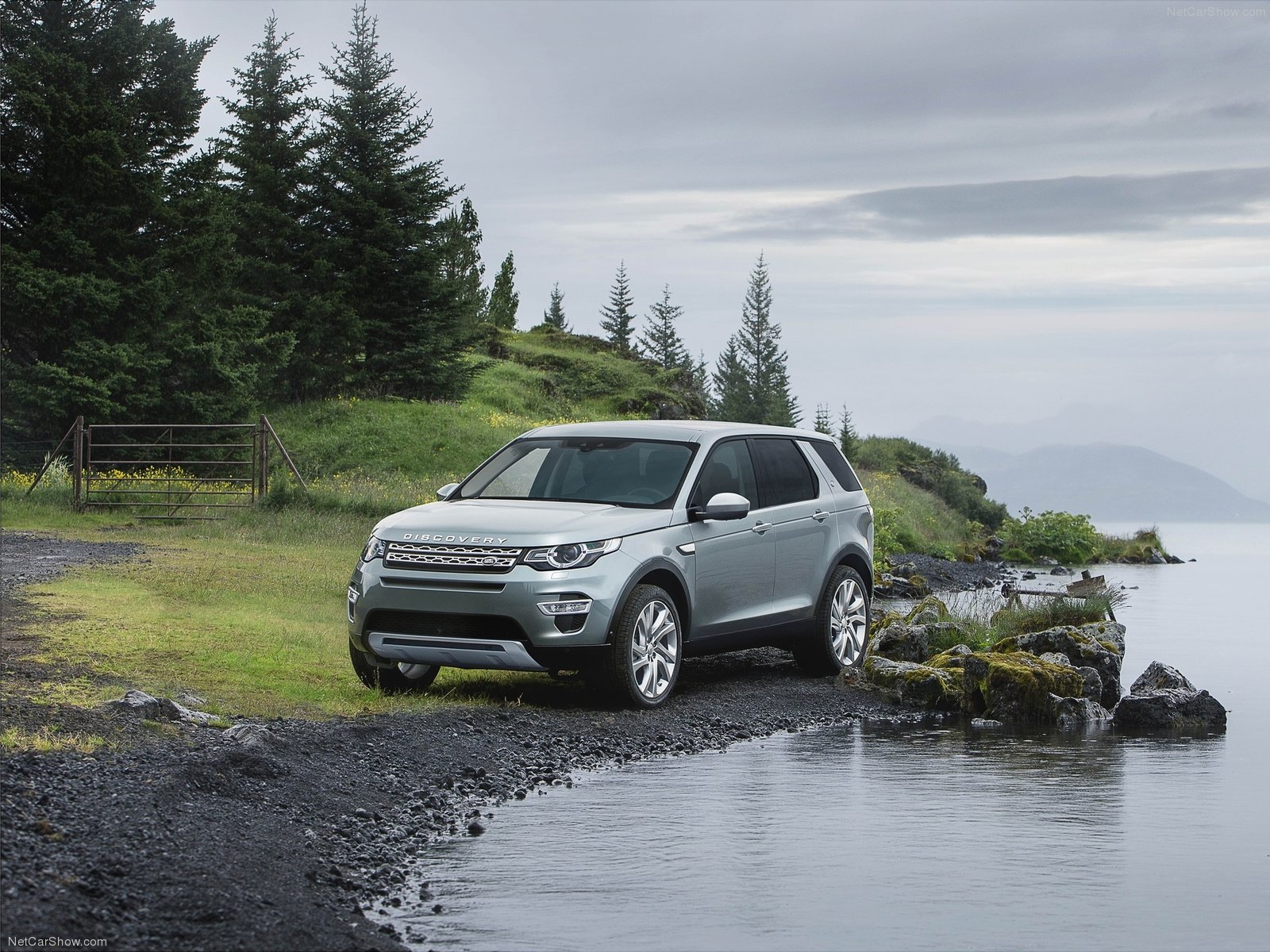Land Rover Discovery Sport Problems
The Land Rover Discovery Sport is a compact SUV that balances comfort with performance. As a car, it appeals to drivers who want something that can handle city streets as well as countryside tracks.
But like any car, the Discovery Sport has its fair share of known issues. If you’re buying one or already own one, understanding these potential problems will help you make more informed decisions and keep your car on the road for longer.

Discovery Sport Models
Since it was launched in 2014 as the replacement for Land Rover’s popular Freelander, the Discovery Sport has had several updates. The biggest change came in 2017 when Land Rover started to use Ingenium engines. Later, in 2019, a facelift was introduced, followed by hybrid engine options in 2020.
| Year | Platform | Major Changes |
|---|---|---|
| 2014 | D8 | Launch year. shared tech with Evoque |
| 2017 | D8 | Switched to Ingenium engines |
| 2019 | PTA | Major interior/exterior refresh, new infotainment, MHEV support |
| 2020 | PTA | Plug-in hybrid added, more tech (wireless CarPlay, new trims) |
| 2022 | PTA | More standard features, minor styling tweaks, new special editions |
| 2025 (Expected) | PTA | Likely next-gen on all-electric EMA platform (TBC) |
| Discovery Sport | No | Coil suspension only (some have adaptive dampers) |
| Defender | Optional | Coil suspension only pre 2020 (air suspension for the newer L663 model) |
| Evoque | No | Coil suspension only |
| Freelander / Freelander 2 | No | Coil suspension only |
| Infotainment | Basic radio/CD player | Touch-screen nav (in later models), Bluetooth, upgraded audio |
Over the years, there has been various trim levels to choose from too, including S, SE, HSE, R-Dynamic S, SE, HSE, HSE Luxury, Urban Edition, Black Edition, and Landmark.
While Land Rover has fixed many of the early problems in its newer models, some have persisted across the years.
Common Problems with the Land Rover Discovery Sport
The Discovery Sport delivers luxury and practicality in equal measure but it isn’t without its faults. These include electrical faults, engine issues, and air suspension problems. The DPF can also be a problem if not maintained properly and some owners have reported turbo failures and timing chain issues.
These can affect safety, performance, and long-term reliability if not maintained and repaired, especially on high-mileage or poorly serviced vehicles.
1. Electrical System Issues
One of the most common issues in the Discovery Sport is the electrical system. Owners have experienced warning lights, infotainment system glitches or the check engine light coming on.
These can be caused by a range of factors, including software bugs, faulty wiring, short circuits, or sensor malfunctions. Using diagnostic tools like OBD-II scanners, technicians can isolate fault codes and recommend targeted repairs. However, troubleshooting electrical problems can be complex, so repairs can be costly and time-consuming.
To minimise the risk of electrical issues, we recommend keeping on top of software updates and have the vehicle scanned for fault codes regularly to catch problems early before they become bigger issues.
2. Engine Problems
Ingenium engines were introduced by Jaguar Land Rover to improve efficiency and reduce emissions. While innovative, they haven’t been without their problems.
Common issues include oil dilution, especially in diesel variants, which can lead to increased oil consumption and reduced lubrication. Regular oil changes and using high quality oil are key to preventing these issues. Buyers should also check for full service history to make sure the engine has been properly maintained.
Timing chain failures are also a major concern, as timing chains can suffer from premature wear or degradation. If a failing timing chain is not addressed promptly, there is a serious risk of engine failure. Having the timing chain replaced at regular intervals is essential maintenance to prevent further damage and costly repairs.
3. Brake Discs
Although brake discs are a wearing part of any car, they can wear prematurely on the Discovery Sport, especially on the rear wheels.
When neglected, worn, or warped brake discs can cause vibration or noise that is felt through the brake pedal and steering wheel, as well as decreased stopping power.
4. Air Suspension Faults
Air suspension is a key part of the Discovery Sports smooth and adjustable ride. However, the system is prone to developing leaks, especially if the vehicle is used off-road frequently.
The air suspension compressor can also have faults over time, leading to uneven ride height from decompressed air bags.
Regular inspections and prompt replacement of worn components, is key to keeping the braking system and suspension safe and smooth.
5. DPF Regeneration
The diesel particulate filter (DPF) is part of the vehicle’s exhaust system, designed to reduce emissions by trapping soot particles.
If the DPF becomes clogged—often due to short journeys that don’t allow the exhaust system to reach the high temperatures required for proper regeneration—it can cause reduced performance, increased fuel consumption, increased consumption of AdBlue, and warning lights.
During active regeneration, extra fuel is injected to help burn off soot in the filter, but this process can lead to oil dilution if it occurs too frequently.
To avoid DPF issues, we recommend frequently going on longer drives to allow full regeneration cycles at high temperatures. In some more extreme cases, forced regeneration or DPF replacement may be necessary.

Repair and Maintenance Options
Discovery Sport owners have several options for servicing and repairing their vehicles.
- Official Land Rover dealerships offer expert support, genuine parts and warranty protection but can be more expensive.
- Independent Land Rover specialists, like Hofmann’s of Henley, can be a more affordable alternative and often provide the same level of expertise.
Many common issues with the Discovery Sport can have an easy fix through simple repairs or part replacements, making maintenance more manageable. For those buying a used Discovery Sport, investing in a comprehensive warranty or service plan is a smart move to protect against unexpected costs.
Repair and Replacement Costs
When it comes to repair costs the Discovery Sport tends to sit on the more expensive end of the spectrum. Costs will vary depending on the issue and the vehicle’s condition. Common replacements like brake pads, sensors or suspension parts can be relatively affordable but engine repairs—particularly those involving the timing chain or turbo—can be costly.
Warranty and Support
Land Rover offers a new vehicle warranty as well as optional extended warranties and service plans. These can cover major components like the engine, transmission and electronic systems. It is important for the owner to understand the terms of their warranty and stick to the recommended service schedule to remain eligible for coverage.

Preventing Common Problems
The best way to avoid costly repairs is through regular preventative maintenance. Sticking to the manufacturer’s service intervals, using approved fluids and parts and having issues diagnosed early can go a long way in extending the life of the vehicle. Key areas to monitor include engine oil quality, brake pad wear, DPF performance and electrical system health.
Ensuring your Discovery Sport is properly equipped with the latest updates and components can also help prevent common problems and maintain optimal performance.
If you are buying a used Discovery Sport, we recommend checking service history thoroughly, investing in an extended warranty where possible, and working with a specialist Land Rover mechanic like us for repairs and diagnostics.
Buying a Discovery Sport or need expert maintenance?
We service and repair Land Rovers at our Henley-on-Thames workshop — just outside Oxford. Whether you’re dealing with electrical issues or engine problems our trained technicians are here to help.
